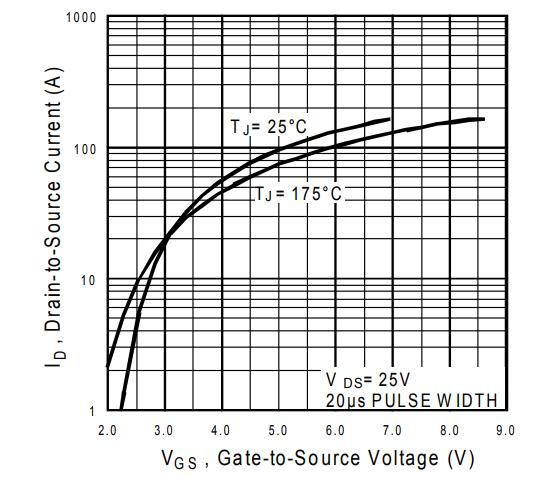Answer the question
In order to leave comments, you need to log in
Maximum gate threshold voltage?
What happens if you apply a voltage slightly greater than the maximum threshold voltage of the gate to the gate of a field-effect transistor? For example, the gate threshold voltage is from 2 to 4 V, and apply 5 V. The field effect transistor will not burn out?
Answer the question
In order to leave comments, you need to log in
No, it won't burn. Provided that you do not exceed the maximum allowable voltage.
treshhold
voltage - the voltage at which the transistor is just starting to open, which means that for the key mode it is only the smallest (as an example IRLZ44N
) gate-to-source voltage value, because the transistor will be more open, therefore the resistance of its channel is less, i.e. less heating loss of the transistor.
Usually, current graphs are given from the gate voltage at a fixed voltage; they show that at voltages close to treshhold, the current through the transistor is not very large, because it is not fully open yet.
the threshold voltage is the opening voltage, the minimum allowable at which the field device opens to the declared current. usually just 2-4 or less than 1 for the "logic drive"
the maximum allowable is within ~ 10v for small ones to ~ 30v for powerful power ones.
Maximum gate threshold voltage?The wording of the title is missing a question word. If there were What is the maximum gate threshold voltage? , then I would answer that the threshold voltage is a technical parameter, it does not happen to be maximum, and in real circuits the voltage on the gate can be both greater than the threshold voltage and less.
FET will not burn?Depending on what you mean. If the breakdown of the gate insulation, then it will not burn out from 5 volts, for this, > 20 ... 25 volts must be applied to the gate. If the thermal burnout of the channel, then this is not a question of the gate voltage, but of the voltage applied to the channel and the current passing through it. And at 5 volts on the gate, this may well happen.
Didn't find what you were looking for?
Ask your questionAsk a Question
731 491 924 answers to any question